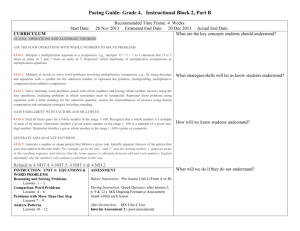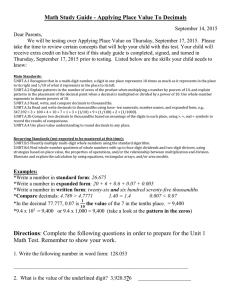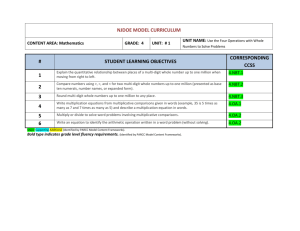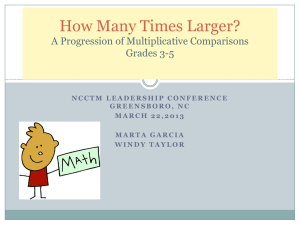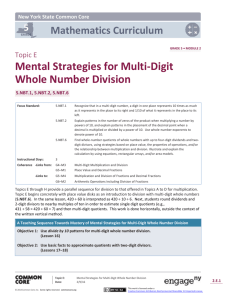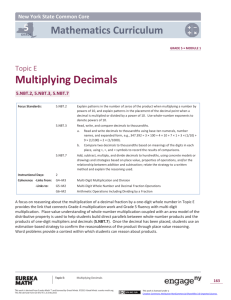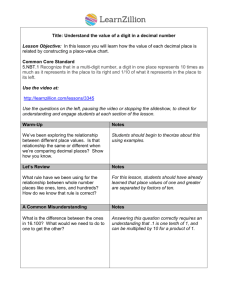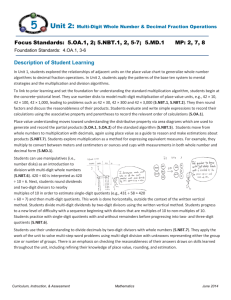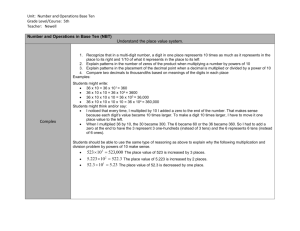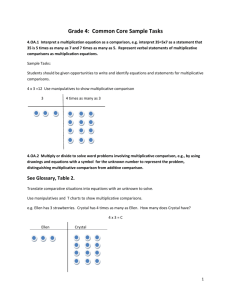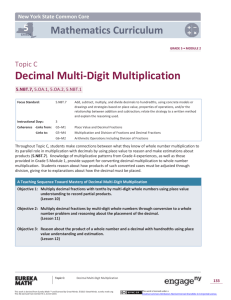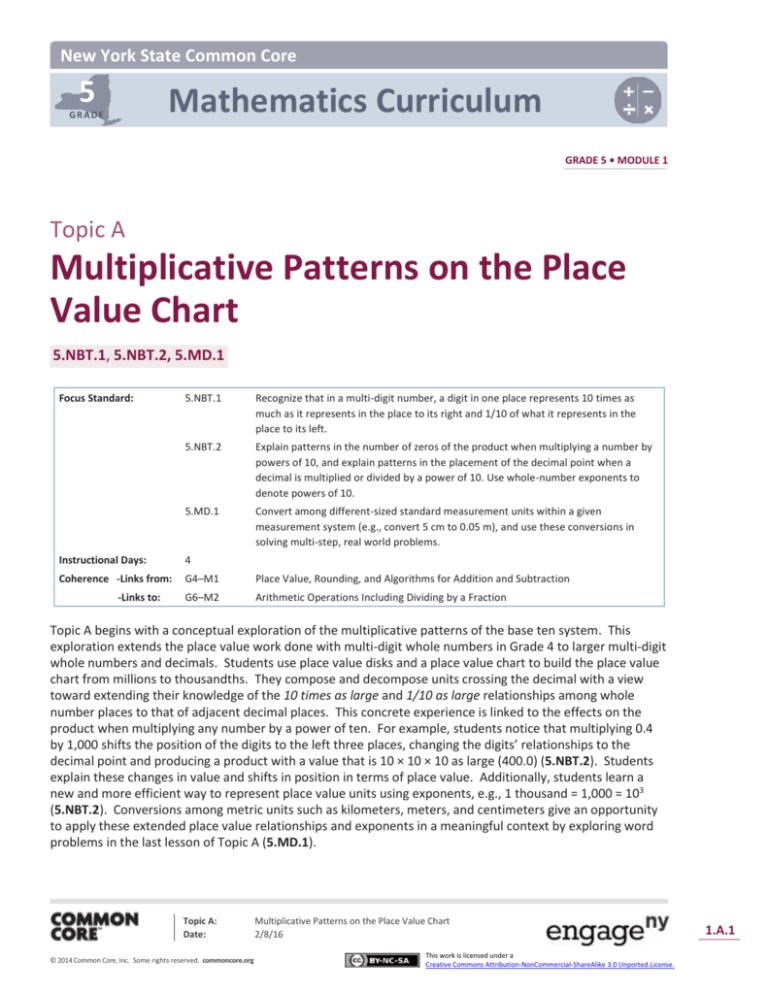
New York State Common Core
5
Mathematics Curriculum
GRADE
GRADE 5 • MODULE 1
Topic A
Multiplicative Patterns on the Place
Value Chart
5.NBT.1, 5.NBT.2, 5.MD.1
Focus Standard:
5.NBT.1
Recognize that in a multi-digit number, a digit in one place represents 10 times as
much as it represents in the place to its right and 1/10 of what it represents in the
place to its left.
5.NBT.2
Explain patterns in the number of zeros of the product when multiplying a number by
powers of 10, and explain patterns in the placement of the decimal point when a
decimal is multiplied or divided by a power of 10. Use whole-number exponents to
denote powers of 10.
5.MD.1
Convert among different-sized standard measurement units within a given
measurement system (e.g., convert 5 cm to 0.05 m), and use these conversions in
solving multi-step, real world problems.
Instructional Days:
4
Coherence -Links from:
G4–M1
Place Value, Rounding, and Algorithms for Addition and Subtraction
G6–M2
Arithmetic Operations Including Dividing by a Fraction
-Links to:
Topic A begins with a conceptual exploration of the multiplicative patterns of the base ten system. This
exploration extends the place value work done with multi-digit whole numbers in Grade 4 to larger multi-digit
whole numbers and decimals. Students use place value disks and a place value chart to build the place value
chart from millions to thousandths. They compose and decompose units crossing the decimal with a view
toward extending their knowledge of the 10 times as large and 1/10 as large relationships among whole
number places to that of adjacent decimal places. This concrete experience is linked to the effects on the
product when multiplying any number by a power of ten. For example, students notice that multiplying 0.4
by 1,000 shifts the position of the digits to the left three places, changing the digits’ relationships to the
decimal point and producing a product with a value that is 10 × 10 × 10 as large (400.0) (5.NBT.2). Students
explain these changes in value and shifts in position in terms of place value. Additionally, students learn a
new and more efficient way to represent place value units using exponents, e.g., 1 thousand = 1,000 = 103
(5.NBT.2). Conversions among metric units such as kilometers, meters, and centimeters give an opportunity
to apply these extended place value relationships and exponents in a meaningful context by exploring word
problems in the last lesson of Topic A (5.MD.1).
Topic A:
Date:
© 2014 Common Core, Inc. Some rights reserved. commoncore.org
Multiplicative Patterns on the Place Value Chart
2/8/16
This work is licensed under a
Creative Commons Attribution-NonCommercial-ShareAlike 3.0 Unported.License.
1.A.1
Topic A 5•1
NYS COMMON CORE MATHEMATICS CURRICULUM
A Teaching Sequence Towards Mastery of Multiplicative Patterns on the Place Value Chart
Objective 1: Reason concretely and pictorially using place value understanding to relate adjacent base
ten units from millions to thousandths.
(Lesson 1)
Objective 2: Reason abstractly using place value understanding to relate adjacent base ten units from
millions to thousandths.
(Lesson 2)
Objective 3: Use exponents to name place value units, and explain patterns in the placement of the
decimal point.
(Lesson 3)
Objective 4: Use exponents to denote powers of 10 with application to metric conversions.
(Lesson 4)
Topic A:
Date:
© 2014 Common Core, Inc. Some rights reserved. commoncore.org
Multiplicative Patterns on the Place Value Chart
2/8/16
This work is licensed under a
Creative Commons Attribution-NonCommercial-ShareAlike 3.0 Unported.License.
1.A.2

